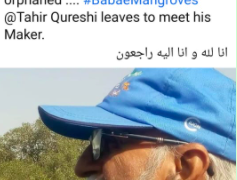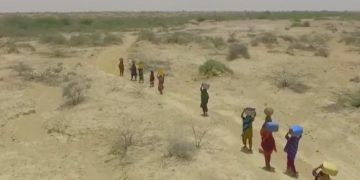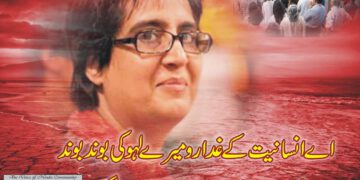While it is true that the birth of a child symbolizes hope, the conditions in which he or she opens the eyes may not necessarily hold out much hope for a good life ahead. It is in this context that one has to walk the tightrope between idealism and realism.
Child labour, howsoever obnoxious, is an essential part of under-developed, poverty stricken societies, and cannot, rather, must not be eliminated at the stroke of a pen, without first putting in place systems that can take care of the children and the families they are supporting through their entry into the workforce before the ‘internationally acceptable’ age of 18. Then again, in an environment devoid of basic facilities, where the poor are unsure about their access to the next meal, how many children have a chance to reach the age of 18?
While it is true that the international community’s abhorrence of child labour has dealt a severe blow to the industries of countries where such a practice is prevalent, and they have to bear the pressure of world bodies like the ILO and the UNICEF which have had the Convention on the Rights of the Child ratified by many such countries, the ground realities bear very little resemblance to the ideal picture of the world contained in their documents.
Top
This, of course, does not mean that no efforts should be made to eliminate the ills altogether. Countries like Pakistan have to take the middle path wherein they have to work slowly, but surely and steadily towards the elimination of child labour. In the meantime, however, the children, who, for a variety of reasons, happen to be the economic mainstay for their families, must be provided a hazard-free work environment, with access to the educational, health and recreational facilities, so that they do not miss out on the simple pleasures of childhood while shouldering an adult burden.
The realization to do this has taken concrete shape in many sectors, and Sialkot’s sports and surgical goods industry stands out as a shining example of the turnaround in the fortunes of the working children. So much so that it was even commended by the U.S. president and cited as an example to be followed by other under-developed nations. The Export Promotion Bureau has also set up a Child Care Foundation for the purposes of education, monitoring and awareness raising. The Foundation has the active support of the private sector, and has performed some ground-breaking work in the implementation of legislation and recommendations favouring the child labour situations in Pakistan.
In some ways, it is a chicken-or-egg situation where the hardliners believe that all children should be withdrawn from the work force otherwise they will never get to a school, or have the opportunity to lead a better life. However, when schools for the poor exist only on paper, the doctor-patient ratio is frightening and opportunities for economic well being few and far between and far outnumbered by those for a variety of social ills, who can say that keeping the children away from work will actually be to their benefit?
What we need is for the Sialkot model to be replicated in all sectors employing child labour so that children who are not working, but are also not able to go to schools simply because there are not any, can be kept away from the drug and crime mafia always on the lookout for recruits. Who would you rather have, a working child or a thief, drug peddler or a gun-runner? After all, there is a lot of ‘easy’ money in that, too.
Let’s get our priorities right. We should work to eliminate conditions that force the children to enter the labour force, and not to eliminate the child itself by imposing restrictions on him in his fight for survival.












